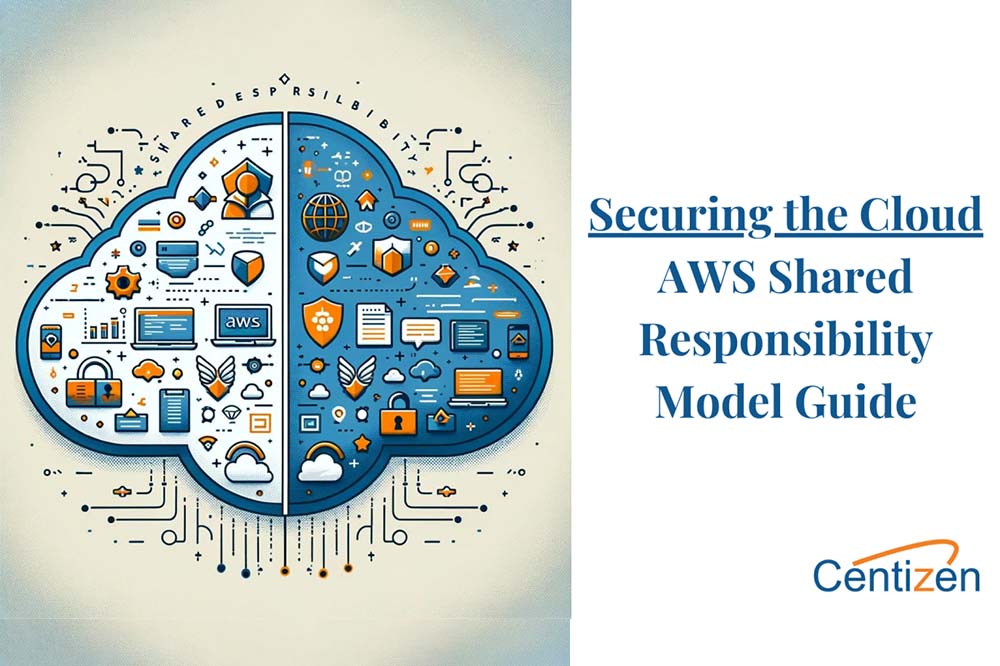Cloud Security: A Deep Dive into AWS’s Shared Responsibility Model

The digital transformation era has ushered in an unprecedented reliance on cloud services, with Amazon Web Services (AWS) at the forefront of this shift. The AWS Shared Responsibility Model is a cornerstone concept that delineates the security obligations of AWS and its customers, ensuring a robust defense against evolving cyber threats. This article delves into the nuances of this model, offering insights into its significance for maintaining a secure cloud environment.
Understanding the AWS shared responsibility model:
At its core, the AWS Shared Responsibility Model is a framework that outlines who is responsible for what in the realm of cloud security. AWS is tasked with the security “of” the cloud, encompassing the infrastructure that runs all of the services offered in the AWS Cloud. This includes physical security, server integrity, and safeguarding networking and facilities.
Conversely, customers are charged with the security “in” the cloud. This encompasses data encryption, identity and access management, operating system security, and network traffic protection. The division is clear: AWS secures the foundation, while customers fortify their assets within that foundation.
Key components and responsibilities:
- AWS responsibilities: From the hardware to the software that underpins the AWS Cloud, AWS ensures the infrastructure’s resilience and security. This includes managing global data centers, computing storage, and networking infrastructure.
- Customer responsibilities: Customers must focus on securing their data, managing credentials, encrypting sensitive information, and maintaining application and network security. They must also adhere to compliance and regulatory requirements, tailoring their security practices accordingly.
Emerging challenges and strategies:
The cloud landscape is dynamic, with new cybersecurity threats, technological advancements, and regulatory changes constantly emerging. To navigate this evolving landscape, customers must:
- Leverage AWS’s advanced threat detection and response tools.
- Utilize automation for applying security best practices.
- Emphasize the importance of identity and access management.
- Ensure data encryption and privacy.
- Address the complexities of hybrid and multi-cloud environments.
Implementing the model effectively:
Effective implementation of the AWS Shared Responsibility Model involves a deep understanding of one’s security obligations and the proactive management of cloud resources. This includes conducting comprehensive security assessments, leveraging AWS security tools and services, adopting security best practices, and fostering a culture of security awareness and education within the organization.
The significance of shared responsibility:
The AWS Shared Responsibility Model is not just about dividing tasks; it’s about fostering a collaborative approach to cloud security. This partnership between AWS and its customers is crucial for developing a secure, resilient, and compliant cloud environment. By clearly understanding and acting upon their responsibilities, customers can significantly mitigate risks and ensure the integrity of their cloud-based assets.
FAQs section:
- How can customers effectively respond to and manage security incidents within AWS? AWS equips customers with a suite of tools and services designed for comprehensive security incident management, enabling detection, investigation, and rapid response to potential threats.
- Does the scope of responsibility under the AWS Shared Responsibility Model vary with different AWS offerings? Indeed, the extent of customer responsibility under the model shifts based on the specific AWS services being utilized, ranging from infrastructure-focused tasks in IaaS to more managed responsibilities in PaaS and SaaS solutions.
- What practices should customers adopt to ensure their AWS environment remains secure over time? Customers are advised to conduct regular security reviews and updates of their AWS configurations to adapt to new security threats, leverage the latest AWS features, and comply with evolving regulatory requirements.
- In what ways does adhering to the AWS Shared Responsibility Model enhance the overall security and reliability of cloud services? By delineating clear security duties between AWS and its customers, the model fosters a proactive approach to cloud security, enhancing trust and reliability through shared efforts in maintaining a secure and compliant cloud ecosystem.
Explore Centizen Inc’s comprehensive staffing solutions and innovative software offerings, including ZenBasket and Zenyo, to elevate your business operations and growth.
Centizen
A Leading IT Staffing, Custom Software and SaaS Product Development company founded in 2003. We offer a wide range of scalable, innovative IT Staffing and Software Development Solutions.
Contact Us
USA: +1 (971) 420-1700
Canada: +1 (971) 420-1700
India: +91 63807-80156
Email: contact@centizen.com
Our Services
Products
Contact Us
USA: +1 (971) 420-1700
Canada: +1 (971) 420-1700
India: +91 63807-80156
Email: contact@centizen.com






